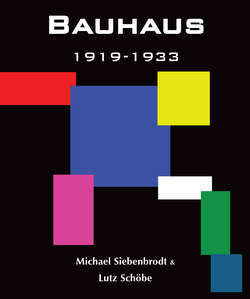Читать книгу Bauhaus. 1919-1933 - Michael Siebenbrodt - Страница 17
На сайте Литреса книга снята с продажи.
History of the Bauhaus
Bauhaus Dessau: Academy for Design (1925 to 1932)
The Ludwig Mies van der Rohe Era
ОглавлениеHannes Meyer, fallen into political and governmental disfavour, had after his discharge taken critical stock of his Bauhaus time in an open letter to the Mayor of Dessau entitled My Discharge from the Bauhaus and shortly thereafter had gone to Moscow with a “red Bauhaus brigade.” In his post, he was succeeded by the German architect Ludwig Mies van der Rohe. Earlier, the attempt to reinstall Gropius as director had failed, as had the appointment of architect Otto Haesler (1880–1962), suggested by Gropius.
Ludwig Mies van der Rohe had drawn attention to himself one year earlier with the design of the German pavilion for the World Exposition in Barcelona. In 1926/1927, he directed the planning of the Weißenhof housing development in Stuttgart, a unique summary of achievements of the so-called Neues Bauen (New Building), with the participation of seventeen leading modern architects from all over Europe. With Mies van der Rohe, the Bauhaus was to focus on teaching at a time when economic and thus political problems intensified in Anhalt following a spreading world economic crisis and the increasing instability of the Weimar Republic. At the time of his installation, he announced: “I do not want marmalade, not workshop and school, but school.” Politically, the Bauhaus was no longer to make itself visible. The school was temporarily officially closed and reopened for the autumn 1930 semester. What remained of the Bauhaus were the name and the building. Everything else was changed in agreement with the city: budget, programme, constitution, content and structure. The students had to reapply. Some were expelled, the politically radical sifted out. School fees were increased, living studios closed. “Five of the most deserving foreign Bauhaus students” were expelled by the Dessau magistrate without explanation.[13] In April 1931, Paul Klee (1879–1940), one of the most important teachers, left the Bauhaus in order to take up a teaching position at the Düsseldorf Fine Arts Academy. Shortly thereafter the only Junior Master, Gunta Stölzl (1897–1983), also left.
Mies van der Rohe did not strive for new experimental education methods at the Bauhaus. The social reference which may have applied to the designs of Gropius and Meyer did not play an important role for Mies van der Rohe. In spite of this, he continued many things begun by his predecessors. This included the adoption of the changes to the workshop structure initiated by Meyer. The experimental approach of Mies van der Rohe lay in the quality of new architectural designs themselves. He deemed all other areas dependent on architecture and, based on this conclusion, he developed the specifics and a variety of educational propositions. His aim was not social efficiency, but the highest aesthetic and constructive quality. The art of building, a term that had been frowned upon earlier, became used again in everyday language and meant that not only the purpose but also the values and humanistic components were of importance. The architectural education now had an even more central role than under Hannes Meyer, with its studies reduced to six semesters, even though the previously characteristic combination of theory and practise had been lost.
Only Ludwig Hilberseimer (1885–1967), who had been appointed by Hannes Meyer, was able to include a practical approach in his classes. Even though technical education was not overly emphasised, the Bauhaus took on more similarities with a regular Technical Academy for Architecture with subdivisions of art and workshop, whose productions had been all but obliterated and reduced to the production of models for industry purposes. Mies van der Rohe himself taught, as Hannes Meyer did before him. His team was reinforced by the appointment of interior designer Lilly Reich (1885–1947) in the spring of 1932, who took over the department of interior furnishing. Starting from the fourth semester the students had the opportunity to attend instruction by the Bauhaus director, the so-called “Construction Seminar.” The influence of Mies van der Rohe, for whom architecture was mainly the commanding control of space, material and proportion, had lasting effects on his students’ understanding of architecture.
Iwao Yamawaki, The Attack on the Bauhaus, collage, 1932
13
Der Fall Bauhaus. In: Stein Holz Eisen. 44.1930. Issue 19 of 10.06.1930 p.418.
